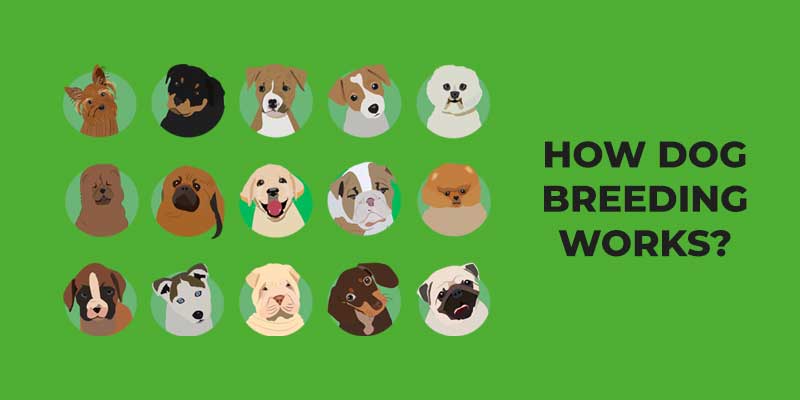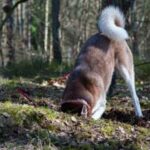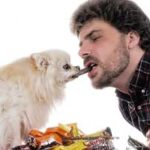
It’s probably the last question that comes to someone’s mind: “How were dog breeds created when you are all surrounded by the affection of your furry friend. But somehow, it’s obvious that we do think of the origin of our beloved pups. We might have heard that dogs are the successors of wolves (ancestors) but are that even true? If it is, how can the successors of wolves happen to be human’s best friends? This article will tell you about these very questions:
Best Selling Dog Treats
Last update on 2025-06-09 / Affiliate links / Images from Amazon Product Advertising API
- A brief history of the dog’s breeds.
- Common terms you hear or read while reading about breeds and breeding.
- What are the different breeds of dogs, and how are they differentiated?
- Genotypic and phenotypic differences in dog breeds.
- Can you create your dog breed?
- What is meant by “responsible breeding,” and What are the AKC’s Guidelines for that.
DOG BREEDING:
Besides petting a dog, breeding a dog is also a common practice nowadays, and some are responsible. Other irresponsible breeders make it happen in their homes with the consultation of their vet doctors. The term “breeding” is not the same as petting. It’s the selection of the dogs of their choice and mating them with their chosen Dam. It’s also called “Artificial selection.” Reasons for breeding can be
- They want specific characteristics in their dog, e.g., physical appearance.
- Dogs are Artificially bred to have specific temperament qualities; e.g., Hunter dogs are bred to have hunting-related rates.
- Breeding also has specific body shape, size, behavioral patterns, and domestication.
Due to Artificial or selective breeding, there are 450 globally recognized breeds known. Many species are yet to be registered and recognized by the American kennel club or as part of registries because they were unable to qualify the requirements of being a breed.
AMERICAN KENNEL CLUB:
It’s a globally recognized club that has set certain qualities and requirements to qualify before a dog breed is recognized globally. The requirements include
- How and where breeding took place
- What are the species you mated to make a new breed? ‘
- What are the health, genotypic (genes), and phenotypic (physical) concerns addressed in mating?
- What were the expectations from artificial selection, and what are the results?
Above stated are some of the requirements that have to be answered to make it to a new breed, and recognition will be followed.
IMPORTANT TERMS of BREEDING:
Here are some of the terms you should familiarize yourself with to learn about breeding and all of the related knowledge to better understand the notion.
- DAM: female parent or partner for mating is called a Dam or bitch.
- SIRE: Male partner or parent of puppies is called a Sire inbreeding.
- WHELP: a newborn offspring or puppy of the Dam and sire called Whelp.
- WHELPING BOX: it’s a common term used instead of a dog’s crate, but specifically, it is used to identify the box where the Dam keeps puppies to provide them food and shelter.
- BREEDER: breeder is the person who will, due to their reasons, will pet and selectively mate the dogs of the same breed or different breed to observe the variance.
- PHENOTYPE: phenotype is used to identify the physical characters, including shape, size, color, coat, fur, etc.
- As the term indicates, the genotype tells the genetic differences or characteristics in any specie.
- INBREEDING: It is the production of the offspring from selectively mating Dam and Sire that are closely related genetically.
- OUTCROSSING: The mating of the dogs is not closely related genetically to increase the genetic variance in offspring. It is mostly used to decrease the genetic issues previously caused by Inbreeding.
- LINE BREEDING: it is the form of Inbreeding that consists of selecting mating partners based on their relationship to specific superior ancestors. e.g., Aunt to nephew.
- CROSS BREEDING: it’s when the breeder mates the individuals of totally different breeds to produce the desired offspring.
- MIXED BREEDING: Mixed breeds or Mutt is a dog that does not belong to any officially recognized breed but can be a mix of two species. It’s mostly not the result of intentional or selective breeding.
- GESTATION: The period of developing a womb inside the body after conception until birth. Dog’s gestation period is 63 days, and the human gestation period is 9 months.
- ESTROUS CYCLE: Dogs, after reaching puberty from 6 to 24 Months Old, female dogs start having an estrous cycle that consists of 4 parts.
- Proestrus: is When the female enters into the age of puberty.
- Estrous: When a bitch is at the peak of “Puberty and called ‘in heat,” most of the time where she is ready to mate.
- Diestrus: it’s the period of sexual inactivity right after estrous.
- Anestrus: it’s the period of sexual incompetence.
Dogs in estrus are called ‘In Heat” become pregnant during a 3–21-day period.
- PUREBREED: Offsprings produced from mates with the same phenotypic and genotypic characters.
HOW DOG BREEDS WERE CREATED?
Dog breeds were created after the evaluation from their ancestors. There are 450 Globally recognized breeds that came from different ancestors, Either the same species or the other breeds. Some were selectively bred, and some accidentally got a variance from the unintentional breeding of dogs and later got recognized from the kennel clubs.
- FIRST DOG BREEDS: A study showed that 9000 years the dogs were classified as either Sled dogs or hunting dogs.
SLED DOGS: Sled dogs were considered 20-25 kgs small dogs. The remains of those dogs are now to be seen in modern Siberian Huskies.
HUNTING DOGS: Hunting dogs were comparatively bigger dogs of weight 30 kgs known to be crossed with Wolves and used for “Polar Bear Hunting.”
- GENETIC HISTORY: According to the genetic Evidence, domestic dogs are the first and large carnivore group to be domesticated. All of the first dogs are wolf-like in their phenotypic characters. Still, drastic changes happened in dog phenotypes and genetics because of human selection, and modern dogs are nowhere near any wolf-like characters.
Modern dogs are difficult to resolve because many are the product of Controlled breeding (for benefits according to the habitat of the breeder).
Here is the list of some of the modern and Ancient Dog Breeds altogether.
- Affenpinscher
- Afghan Hound
- Africanis
- Aidi
- Airedale Terrier
- Akita
- Blue Blood Bulldog
- Alaskan husky
- Alaskan Klee Kai
- Alaskan Malamute
- American Bulldog
- American bully
- American Cocker Spaniel
- American English Coonhound
- American Eskimo Dog
- American Foxhound
- American Hairless Terrier
- American Pit Bull Terrier
- American Staffordshire Terrier
- American Water Spaniel
- Andalusian Hound
- Armenian dog
- Artois Hound
- Australian Cattle Dog
- Australian Kelpie
- Australian Shepherd
- Australian Stumpy Tail Cattle Dog
- Australian Terrier
- Austrian Black and Tan Hound
- Austrian Pinscher
- Azawakh
- Banjara Hound
- Barbet
- Basenji
- Basque Shepherd Dog
- Basset Bleu de Gascogne
- Basset Fauve de Bretagne
- Basset Hound
- Bavarian Mountain Hound
- Beagle
- Beagle-Harrier
CAN YOU CREATE YOUR DOG BREED?
The answer to this question is Yes, You Can only if you are a responsible breeder. Now the question comes that “who is the responsible breeder”? One can only be a responsible breeder if they follow the Guidelines of AKC’S of breeding to avoid any mishap. Guidelines Include the contract, the safety and preventive conditions, and the specifications of the Results you want in a new breed.






